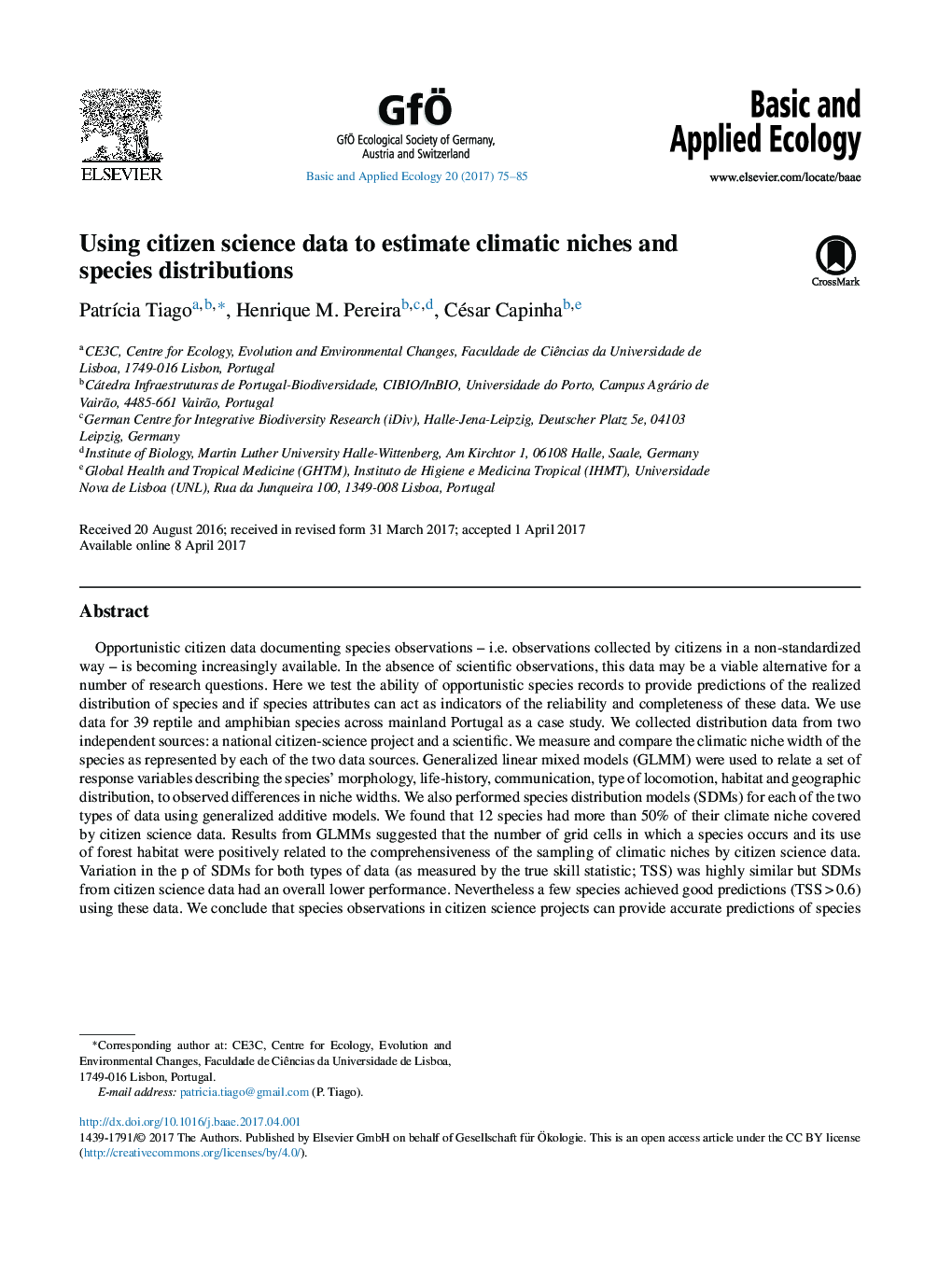| کد مقاله | کد نشریه | سال انتشار | مقاله انگلیسی | نسخه تمام متن |
|---|---|---|---|---|
| 5742839 | 1617861 | 2017 | 11 صفحه PDF | دانلود رایگان |
Opportunistic citizen data documenting species observations - i.e. observations collected by citizens in a non-standardized way - is becoming increasingly available. In the absence of scientific observations, this data may be a viable alternative for a number of research questions. Here we test the ability of opportunistic species records to provide predictions of the realized distribution of species and if species attributes can act as indicators of the reliability and completeness of these data. We use data for 39 reptile and amphibian species across mainland Portugal as a case study. We collected distribution data from two independent sources: a national citizen-science project and a scientific. We measure and compare the climatic niche width of the species as represented by each of the two data sources. Generalized linear mixed models (GLMM) were used to relate a set of response variables describing the species' morphology, life-history, communication, type of locomotion, habitat and geographic distribution, to observed differences in niche widths. We also performed species distribution models (SDMs) for each of the two types of data using generalized additive models. We found that 12 species had more than 50% of their climate niche covered by citizen science data. Results from GLMMs suggested that the number of grid cells in which a species occurs and its use of forest habitat were positively related to the comprehensiveness of the sampling of climatic niches by citizen science data. Variation in the p of SDMs for both types of data (as measured by the true skill statistic; TSS) was highly similar but SDMs from citizen science data had an overall lower performance. Nevertheless a few species achieved good predictions (TSSÂ >Â 0.6) using these data. We conclude that species observations in citizen science projects can provide accurate predictions of species realized distributions, however, efforts should be made to identify the conditions under which these data are more likely to provide reliable representations of the species niches.
Journal: Basic and Applied Ecology - Volume 20, May 2017, Pages 75-85
